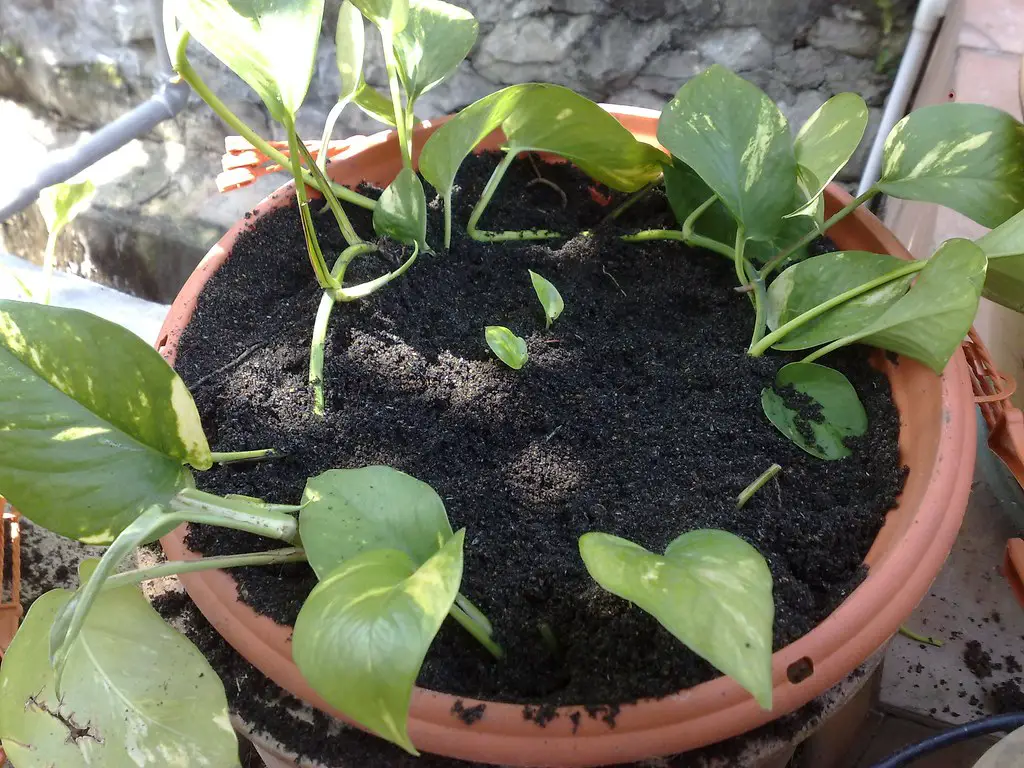Devil’s Ivy, also known as Epipremnum aureum, is a well-loved houseplant revered for its lush and heart-shaped leaves. This fast-growing vine is native to the Solomon Islands but has found its way into homes around the globe. With its attractive foliage and ability to adapt to various indoor conditions, it’s a favorite choice for both novice and experienced gardeners.
The leaves of Devil’s Ivy can vary in color from a rich green to golden or creamy white variegations. Often displayed in hanging baskets or as a climbing feature on trellises, it can create a tropical and lively ambiance. In addition to its beauty, Devil’s Ivy is also known for its air-purifying qualities, making it a beneficial addition to homes and offices.
Perhaps one of the most appealing aspects of Devil’s Ivy is its low-maintenance care requirements. Even under less-than-ideal conditions, it tends to thrive, providing greenery and life to indoor spaces. Its resilience and versatility have contributed to its widespread popularity.
| Attribute | Details |
|---|---|
| Common Names | Devil’s Ivy, Golden Pothos |
| Botanical Name | Epipremnum aureum |
| Family | Araceae |
| Plant Type | Climbing vine |
| Mature Size | 6-10 feet indoors |
| Sun Exposure | Low to bright indirect light |
| Soil Type | Well-draining potting mix |
| Hardiness Zones | 10-12 |
| Native Area | Solomon Islands |
Devil’s Ivy Care
Devil’s Ivy is one of the most accommodating houseplants, thriving in a variety of lighting and watering conditions. Though it can adapt to low light, it prefers bright, indirect sunlight for optimal growth. Overwatering can be detrimental, so it’s best to allow the soil to dry out between watering.
The plant’s care routine may include occasional feeding with a balanced liquid fertilizer during the growing season and regular checking for pests like spider mites or mealybugs. As long as the basic needs are met, Devil’s Ivy rewards its caretakers with robust growth and vibrant foliage.
Light Requirement for Devil’s Ivy
Bright, indirect light is ideal for Devil’s Ivy, although it can tolerate low light as well. Direct sunlight should be avoided, as it can scorch the leaves.
Soil Requirements for Devil’s Ivy
A well-draining potting mix is essential for Devil’s Ivy to prevent root rot. A typical houseplant potting soil mixed with some perlite or sand will work well.
Water Requirements for Devil’s Ivy
Watering should be done when the top inch of the soil feels dry. Overwatering can lead to root rot, so it’s better to err on the side of underwatering.
Temperature and Humidity
Devil’s Ivy prefers temperatures between 60-80°F and can tolerate a wide range of humidity levels.
Fertilizer
Feeding with a balanced, water-soluble fertilizer every 6-8 weeks during the growing season will support healthy growth.
Pruning Devil’s Ivy
Pruning can be done to control size or encourage bushier growth. Trim the stems back as desired, especially if the plant is becoming too leggy.
Propagating Devil’s Ivy
Propagation is easily done through stem cuttings. Simply place a cutting with a few leaves in water or soil, and roots should develop within a few weeks.
How To Grow Devil’s Ivy From Seed
Growing Devil’s Ivy from seed is uncommon and can be challenging. It’s typically propagated through cuttings.
Common Pests & Plant Diseases
Spider Mites
Small spider mites can be treated with insecticidal soap.
Mealybugs
Mealybugs can be removed with a cotton swab dipped in alcohol.
Common Problems With Devil’s Ivy
Yellowing Leaves
Overwatering often causes yellowing leaves. Reduce watering frequency to resolve this issue.
Leggy Growth
Insufficient light leads to leggy growth. Moving the plant to a brighter location can correct this problem.
Pro Tips
- Be patient with watering; it’s better to underwater than overwater.
- Rotate the plant occasionally to ensure even growth.
- Trim long vines to maintain the desired shape and promote fuller growth.
- Display in a hanging basket or provide support for a climbing appearance.
- Be cautious with direct sunlight; it may burn the leaves.




